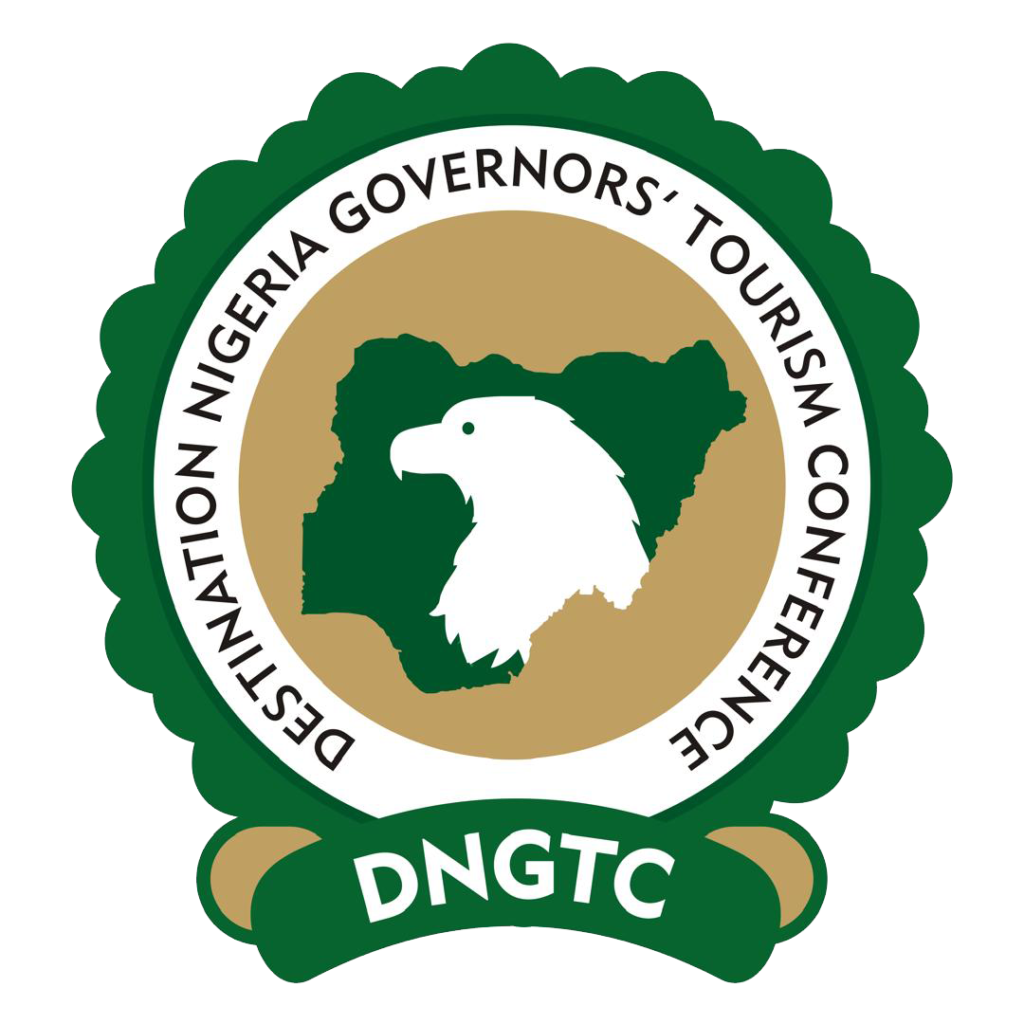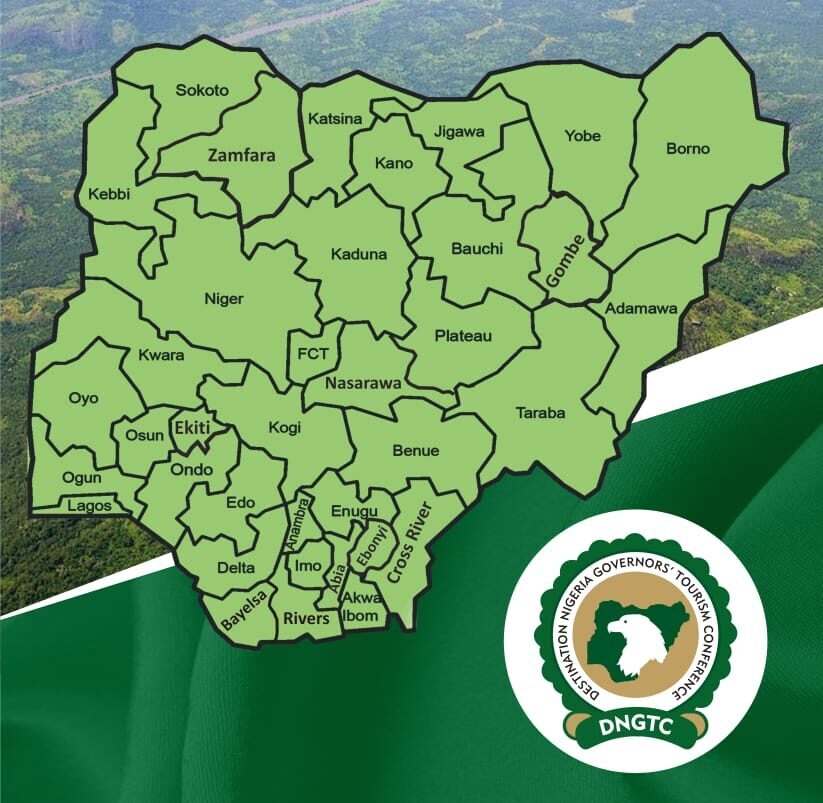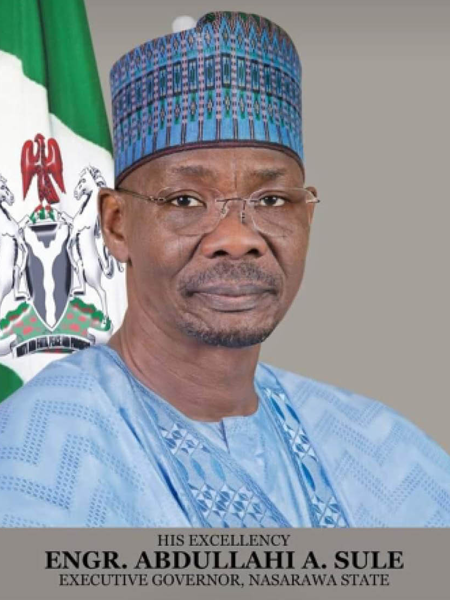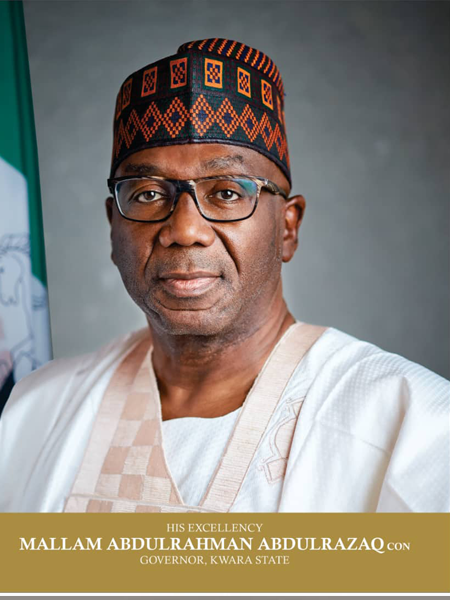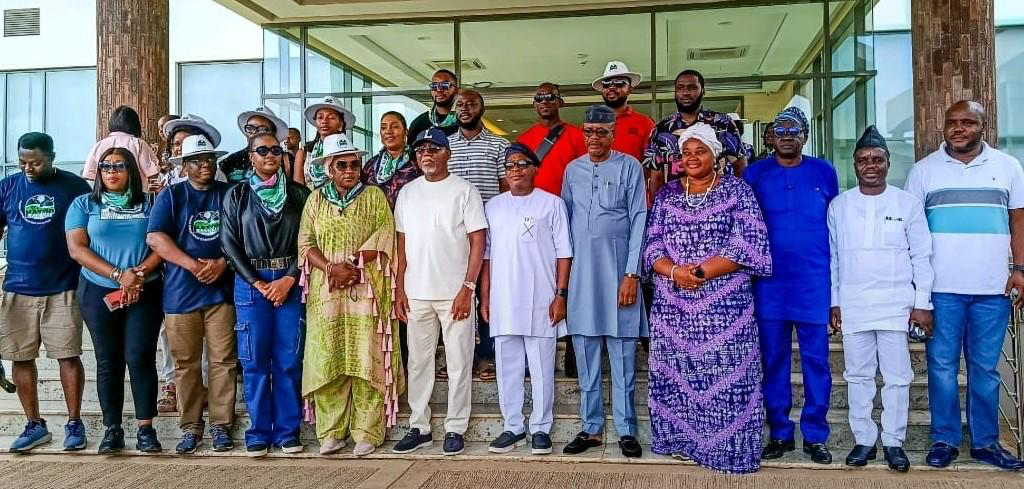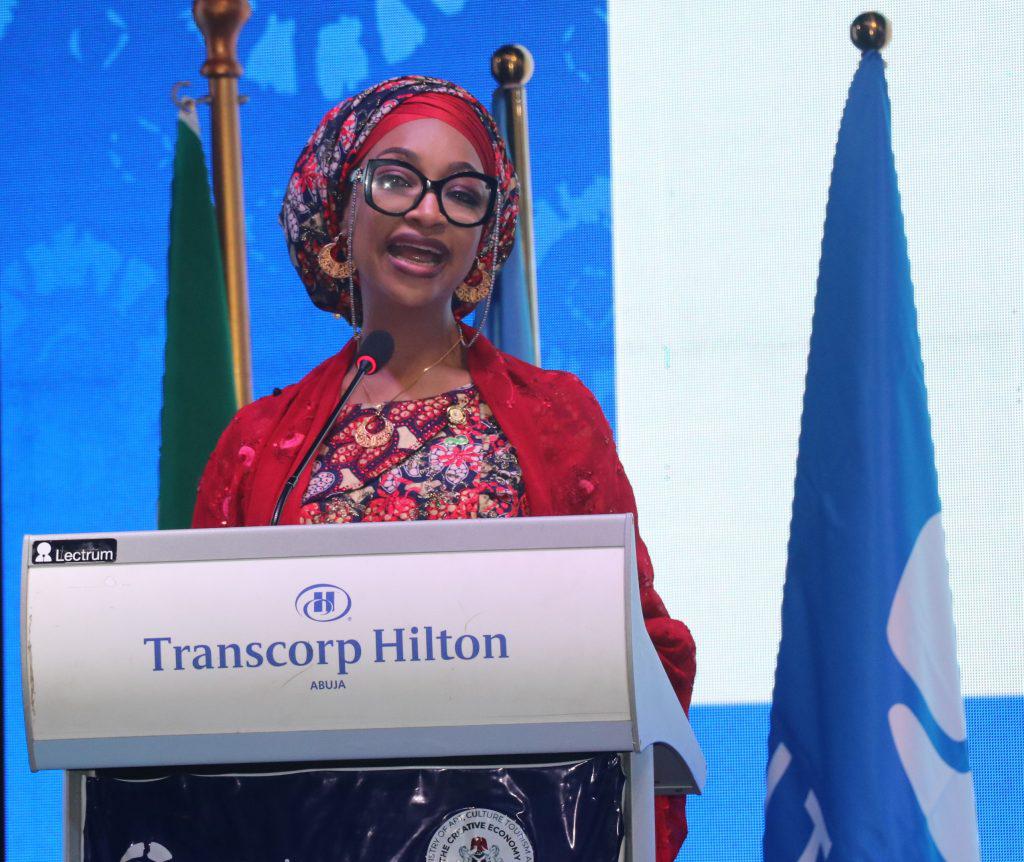DNGTC 2025
Theme: Harnessing Tourism:
A Strategic Pathway for Nigerian Governors to Foster Economic Growth and Employment
25th- 26th Aug, 2025
Abuja Continental Hotel, FCT
Organized by:


Introducing
DNGTC 2025
Destination Nigeria Governors’ Tourism Conference, DNGTC, is the premier executive tourism mice and networking event with the opportunity to drive tourism and related investment directly to States in Nigeria with the purpose of attracting outbound tourists from different parts of the world.
The event is an eye-opener for the executives, and policymakers to explore the beauty of tourism development as a catalyst for economic prosperity in Nigeria
The objectives of DNGTC 2025
Destination Nigeria Governors’ Tourism Conference 2025 is a premier executive tourism MICE event designed to foster knowledge sharing and collaboration among key stakeholders. The conference aims to:
Discover Tourism Potential for Job Creation
Uncover opportunities within the tourism sector to create sustainable employment across Nigeria.
Explore Tourism as a Tool for Economic Development
Analyze how tourism can drive economic growth and significantly increase Internally Generated Revenue (IGR) in each state.
Showcase and Develop Cultural Values
Identify, preserve, and promote Nigeria's rich cultural heritage as a unique asset in the tourism sector.
Utilize Tourism as a Social Instrument
Leverage tourism as a powerful tool to engage and empower the youth positively, fostering social cohesion and development.
Nigerian Governors
Popular Tourist Sites By Region: South East
Awhum Water Fall and Cave
Awhum waterfall is situated at Amaugwe village of Awhum town in Udi Local Government Area. The waterfall is as a result of massive outcrop of granite rock with water cascading over the top forming a stream. A section of the fall is warm through the season. The fall is 30 meters high and is located close to Awhum Monastery. The water is said to be curative (have healing power) and capable of dispelling evil or satanic forces if and wherever sprinkled. It takes about 45 minutes walk from the parking spot to the fall.
Ogbunike Cave
Ogbunike Caves are situated in a valley with tropical rain forest behind the “Ogba” hills in which lies St. Monica College, Ogbunike. Descending into the valley where the caves are located is a lengthy walkway made up of about 317 steps said to have been constructed by the Anambra State Government in the mid 90s. At the end of the walkway is an open space used as a reception point where visitors are by tradition to remove their shoes.
The main cave consists of a massive structure with a big open chamber of about 5m high, 10m wide and 30m long at the entrance. There are ten tunnels at the main chamber leading to different directions.
Oguta Lake, Oguta
Oguta Lake is one of the largest natural lakes in Nigeria and was formerly used as a port for exporting palm products.
This lake, located in Oguta, is a source of water and protein (fish) to the town. It divides the town into two (Oguta 1 and Oguta 2) and unlike most natural lakes, its water is clean and fresh. The lake has two colors that never mix with each other.
The lake has a resort center, Oguta Lake Holiday Resort — the perfect place for relaxation. You can hang out and have fun with your friends and families at the lake and resort.
Arochukwu Cave
This famous place is worth visiting, as the cave has several outlets and secret places within the cave, and many of them are dark inside because they are located many yards from the main entrance. This cave is best known as a route through which slaves left for other settlements around the world and also as a holding capacity for slaves to be sold to European and Portuguese buyers.
Before the slave trade era, the Arochukwu cave was used by the elders to hold court where they deliberate consultative issues within the confines of the cave.
Abakaliki Green Lake
Ebonyi State is indeed blessed with many places endowed with naturally beautiful features. The environment is unique in nature and, hence, attracts people for sightseeing and relaxation. Some of these places are fully developed while others are receiving attention from both the State and Federal governments. The following are some of the tourism destinations within the State.
It is located right inside Government House. Small huts are built there for relaxation and for visitors to admire the many wonders of nature. The green lake served as a leisure and relaxation centre for the colonial masters. It’s upgraded with modernized facilities which make it a tourist haven.
Popular Tourist Sites By Region: South South
Pleasure Park
It is worthy of mention that Port Harcourt Pleasure Park is home to the entertainment industry as renown Nollywood actors and top music artistes (local and international) come to use the park to shoot movies, music videos as well as premiere same at the Cinema. One such trended movie that was shot in Port Harcourt Pleasure Park and premiered in Kada Cinemas is UnRoyal starring Pete Edochie, Ik Ogbonna, Blossom Chukwujekwu, Ime Bishop Umoh (a.k.a. Okon Lagos), Linda Osifo and others.
The education sector also makes the park a destination for after-school fun, excitement and relaxation as many tertiary institutions, secondary and primary schools as well as military schools bring their scholars for recreation and fitness.
Benin National Museum
The Benin City National Museum is a national museum in Benin City, Nigeria. located in the city centre on King’s Square. The museum has a significant number of artifacts related to the Benin Empire such as terracotta, bronze figures and cast iron pieces. It also has ancient art related to the early times.
The National Museum, Benin City was opened to the public in 1973. It is managed by the National Commission for Museums and Monuments (NCMM), an agency of the Federal Government of Nigeria responsible for the preservation, promotion and development of Nigeria’s cultural heritage.
Nelson Mandela Gardens
The Garden sits on 14,414 acres of choice land within the perimeter of the Asaba International Airport in Delta State, Midwest region of Nigeria. Given the non-apologetic espousal of the Mandela philosophy by Dr Newton Jibunoh and its synergy with his ethos, the Garden is the fourth official monument of such after similar establishments in Washington, London and Johannesburg by the Nelson Mandela Family to actualize the vision of the great icon Madiba.
Uyo Township Stadium
Uyo Township Stadium is a multi-use stadium located in Uyo, the capital of Akwa Ibom State, Nigeria. It is used mostly for football matches and is the home stadium of Akwa United F.C. of the Nigerian Premier League. It is also a center for social, cultural, political, and religious events. The popular annual Akwa Ibom Christmas Carol, organized by the Akwa Ibom State Government, always holds at the stadium. The stadium is located close to a major market in Uyo City, called Akpan Andem Market. The stadium has a capacity of 5,000 people
Slave History Museum
The museum was established to bring the history of the slave trade to more people and in a more immediate manner than historical writing alone. Several scholars participated in the design of the museum, and oral as well as written sources were consulted. It includes biographies of individuals involved in the trade (victims, slavers, and others). Major exhibits include:
- The Esuk Mba Slave Market in Akpabuyo, describes that market, where new captives from the hinterland (typically but not always prisoners of war) were sold into the slave trading system.
Bayelsa
Bayelsa is a coastal state in Nigeria that is known for its stunning beauty and rich culture. With a long coastline along the Atlantic Ocean, Bayelsa is home to some of the most stunning beaches and lagoons in the country.
If you’re looking to explore all that this state has to offer, here are eight (8) of the best places to visit in Bayelsa. From beaches to historic sites, you won’t be disappointed with the diverse attractions in this state.
Popular Tourist Sites By Region: South West
Lekki Conservation Center
Lekki Conservation Centre is a hidden gem waiting for tourists to explore as they Walk on the longest canopy bridge in Africa. The Centre is one of the best and most visited nature reserves in Nigeria. Raised walkways enable viewing of animals like monkeys, crocodiles and various birds. There is also a conservation center and a library. If you appreciate nature and are in a limbo as where to take your partner or lover, this center is the ideal place to visit.
Iyake Suspended Lake, Ado Awaiye
The natural world is a treasure trove of sights and wonders and something quite special can be found in western region of Oyo State, Nigeria. Suspended lakes are amongst the most special wonders of nature because they are large bodies of water that have pooled on a mountain or hill. They are rare because of how difficult to reach most of them are, so there are officially two accessible ones on the planet – here and in Colorado, US.
The Ado Awaye suspended lake is atop Oke Ado, a large hill in the mysterious town of Ado Awaiye. The town’s origins stretch back to the 1500’s and the tales are full of interesting twist and turns.
The Idanre Hill, or Oke Idanre
Idanre hill is one of the most awesome and beautiful natural landscapes in Ondo State and Nigeria. Added to its beauty which fires human curiosity is the fact that the entire people of Idanre lived on these boulders for almost a millennium. Since emigration down hill in 1923, the topography, vegetation as well as the fauna and floral life have remained undistributed. However the festivals provides occasions for reconciliation of the low-landers and their natural environments as well as reenactments or historical episodes in local Idanre history and its wider Yoruba ideology, mythology and confederacy.
Olumo Rock
Olumo Rock is located in the city of Abeokuta, Ogun State, Nigeria. Historically, the rock was a natural fortress for the Egbas during inter-tribal warfare in the 19th century. It provided protection to the Egba people when they needed it, and is now held in high esteem by the members of the clan. The mountain, one of the most popular tourist destinations in Nigeria, sits in the heart of Abeokuta – a name which means “Under the rock” in the Yoruba language. The rock has a height of 137 meters above sea level. Abeokuta was originally inhabited by the Egbas, who the rock provided with sanctuary and gave a vantage point to monitor the enemy’s advance, leading to eventual triumph in war. The town of Abeokuta eventually grew as these new settlers spread out from this location
Erin-Ijesha Waterfalls
Erin-Ijesha Waterfalls (also known as Olumirin waterfalls) is located in Erin-Ijesha, Osun State. It is a tourist attraction located in Oriade local government area, Osun State, Nigeria. The waterfalls were discovered in 1140 AD by one of the daughters of Oduduwa. However, according to The Nation,”Olumirin waterfall was discovered by hunters in 1140 AD”. Another source has it that the tourist site was discovered by a woman called Akinla, founder of Erin-Ijesha town and a granddaughter of Oduduwa, during the migration of Ife people to Erin- Ijesa
Ikogosi Warm Springs
In 1952, Southern Baptist missionary, Rev. John S. McGee, from his mission base in the nearby Ekiti town of Igede, went to the source of the hot and cold springs, about which he had heard from the Ikogosi people. Initially, he was discouraged from doing this, for reasons of the tradition he had heard from the local residents, which was that nobody should ever visit the source of these two streams, because of the idea that to do so would be to invite death from the supernatural forces that were responsible for this strange, and most unusual, feature of nature. In spite of these “warnings,” Rev. McGee made his way through the bush/forest, up the hill to the source of the two side-by-side springs. According to Rev. McGee’s later brief, written account, “After seeing it, I felt that it could be used for a good purpose.
Popular Tourist Sites By Region: North Central
Kura Falls
Kura falls is located 77 km from Jos, Plateau State. It is a fascinating and exciting place to visit. The village is situated within rich savannah vegetation with mountainous ranges and lakes, providing a beautiful scenery ideal for picnic, bird watching and nature trail.
The Gurara waterfall
The Gurara river is a large tributary of the famous River Niger and is most impressive after the rainy season when the water becomes a raging torrent while in January, during the dry season and when water levels are low, there are clear pools at the bottom of the falls in which visitors can swim.
The Gurara waterfall is the favourite feasting spot for herd of cattle that feed on the sparse short grasses carpeting the river banks. The environment is completely free from dirt or contamination, with lots of trees and shrubbery providing healing fresh oxygen, which animates the brain.
Nasarawa Tourist sites
Nassarawa state is a pot pourri of tourist attractions with array of hills and rocks that dot the state’s landscape.
On top of any of these natural edifice, tourists are offered a wonderful spectacle of the state. Among these Rocks and Hills are :the famous Mada Hills and Rukubi Hills, both at Akwanga, Ava and Eggon Hills at Nassarawa, Captain Maloney Hills at Keffi, and Efugogiri Hills at Doma, Numa Rock, Akwanga, and Mail Rumba Rock, Doma.
Benue State
The recent emphasis placed by the Federal Government of Nigeria on tourism is predicated on the realization that tourism as an industry is a great earner of foreign exchange. Furthermore, the fact that leisure is increasingly gaining some prominence even in developing Nations means that more people are saving money to travel just for recreation. The development of scenic views, hotels, cultural displays and the exploitation of the existing tourist attractions appear to be an obvious mandate.
Owu fall
Towering about 120 metres above sea level to the base where it cascades to an ice-cold pool, Owu falls is considered as the highest and most spectacular waterfall in the whole of Sub-Saharan Africa. The fall is surrounded by a stretch of mountains extending to Ekiti and Kogi state.
Kogi State
Tourist attractions in Kogi State include the colonial relics (such as Lord Lugard House), the confluence of Rivers Niger and Benue, Ogidi (An African town with formations of Igneous Rock mountains and a traditional art & craft industry) and natural land features hills and terrains that serve as hiking trails .
Here we go with this list…
- The Inikpe statue: This statue was built in memory of Inikpe, the daughter of the first Attah of Igala kingdom who was buried alive on the instruction of the Oracle to restore peace in the land. This site is a cool tourist spot in Kogi State today.
- The confluence of River Niger and River Benue: Just as we said earlier, this state is well know for thus confluence, and a visit there is not a bad idea at all.
Popular Tourist Sites By Region: North East
The Kiri Dam
The Kiri Dam is in Shelleng local government area of Adamawa State in the north east of Nigeria, damming the Gongola River. It is a 1.2 km long, 20 m high zoned embankment with an internal clay blanket. The dam was mainly completed in 1982. The reservoir has a capacity of 615 million
The dam was built to provide irrigation for the Savannah Sugar Company (SSC), a large-scale sugar cane plantation and processing company set up as a joint venture between the Nigerian Federal Government and the Commonwealth Development Corporation (CDC), London. The CDC was managing agent for the project, and the construction contract was awarded to NECCO, a company largely owned by the government
Gooya Valley
Gooya, Goya or Gòoya is an archaeological site, ancient city and a mountainous valley with many hollows, caves and gorges found in Fika local government area, Yobe State, Nigeria It is considered one of the tourists attraction sites in Yobe and the deepest gorge valley in Nigeria. The site is presently a home for various wild animals like hyenas and monkeys. It was used for a defensive retreat by the Karai-karai people against invading neighbouring tribes during intertribal wars.
Gashaka-Gumti National Park
Gashaka-Gumti National Park (GGNP) is a national park in Nigeria, It was gazetted from two game reserves in 1991 and is Nigeria’s largest national park. It is located in the eastern provinces of Taraba and Adamawa to the border with Cameroon. The total area covers about 6,402 km2, much of the northern GGNP is savannah grassland, while the southern GGNP sector of the park has a rugged terrain characterized by very mountainous, steep slopes as well as deep valleys and gorges, and is home to montane forests. Altitude ranges from ranging from about 457 metres (1,499 ft) in the northern flatter corner of the park, up to 2,419 metres (7,936 ft) at Chappal Waddi, Nigeria’s highest mountain in the park’s southern sections.
Lake Dadin Kowa
Those interested in Natural sites for sightseeing will love this lake. You can swim there and explore nature. The Federal Government had plans to make the lake into an irrigation expansive scheme. And plans to build a dam by this Lake have been underway since 2019.
Gwoza Hills
The Gwoza Hills, with height of about 1300 meters above the sea level is made up of ranges of mountains/hills known as the ‘Mandara Mountains’ and provides beautiful scenery. These Mountains/hills form a natural barrier between Nigeria and Republic of the Cameroun, starting from pulka meandering towards Mubi and beyond. The mountains, with promenade-like paths along Gwoza dugi vicinity is conducive for mounatineering, trekking and picnicking – it has several streams, ponds, springs and is dotted with settlement by various tribes. Nigerian government uses this hill as training ground for Mobile Police, members of the Man-O-War-Bay and various National Orientation courses.
Yankari Game Reserve
Yankari Game Reserve is a large wildlife park and former National Park located in the south-central part of Bauchi State, in northeastern Nigeria. It covers an area of about 2,244 km2 (866 sq mi) and is home to several natural warm water springs, as well as a wide variety of flora and fauna. Its location in the heartland of the West African savanna makes it a unique way for tourists to watch wildlife in its natural habitat. Yankari was created as a game reserve in 1956, but later designated Nigeria’s biggest national park in 1991. It is the most popular destination for tourists in Nigeria and plays a crucial role in the development and promotion of tourism and ecotourism in Nigeria. It is also a popular eco-destination in West Africa
Popular Tourist Sites By Region: North West
Gidan Makama Museum Kano
The museum houses an impressive collection of arts, crafts, and historical artifacts that paint a vivid picture of Kano’s past. The structure itself, recognized as a National Monument by the Nigerian government, is a 15th-century marvel that echoes the architectural sophistication of the era.
The museum is thoughtfully partitioned into 11 distinct galleries, each offering a glimpse into a unique aspect of Kano’s history and culture. From the Zaure or the main entrance hall, adorned with traditional materials and maps of Kano, to galleries that narrate the tales of statehood, the 19th century, the Civil War, economy, industry, and music, every room is a portal to a different time.
Kwatarkwashi Rock/Natural Spring
The rock’s history dates as far back as Kwatarkwashi town itself. Attraction to the rock is hinged on the spiritual significance which the rock possesses. Kwartarkwashi Rock/water spring still attracts visitors from different parts of Nigeria and the world at large. Tourists are allowed to do everything such as: sight-see, relax, climb the rocks, picnic, hunt, fetch or drink from the spring water coming out of the rocks, carry out research, etc but they are not allowed to go in the caves. The caves are out of bounds to tourists. This is because the caves are very deep and dark, and wild animals/reptiles may be hiding in them
The Wawan Rafi Lake
The Wawan Rafi Lake, nestled in the beautiful Kazaure town in Jigawa State, Nigeria, is a captivating natural landmark. It’s not just the serene waters and vibrant ecosystem that make it stand out, but also the unique blend of natural beauty and recreational opportunities it offers. Surrounded by an arid yet picturesque landscape, the lake is a haven for diverse wildlife and plant species. The region around Wawan Rafi Lake is characterised by open plains and sporadic vegetation, providing a habitat for various bird species, fish, and other aquatic creatures. The lake supports various macroinvertebrates, highlighting its ecological significance despite some levels of organic pollution.
Kusugu Well & Legendary Bayajida Sword: “Kusugu
Kusugu Well & Legendary Bayajida Sword: “Kusugu” is where a giant snake called “sarki” was killed with a sword by Bayajida in the 10th century AD because the snake only allowed Daura people then to draw water from the well once in a week. This heroic act by Bayajida made Daurama -the reigning queen of the time- to marry Bayajida who came from the middle east. The well and the sword are still intact and can be seen by tourists.
Kajuru Castle
Kajuru Castle is a luxury villa, built between the years 1981 and 1989, at Kajuru (Ajure) village in southern Kaduna State, Nigeria. It was built by a German expatriate in Nigeria, living in Kaduna at the time.
The castle is located at about 45 km from Kaduna on a mountaintop in Kajuru (Ajure) village, Kaduna State. Built with 1 meter thick granite stone in a fanciful medieval-inspired Romanesque style, it is adorned with turrets, an armory and a dungeon.
Girmache Shrine, Zuru
The Girmache shrine is located in Zuru, Zuru local government area of Kebbi State. The shrine is more or less a grove because thick trees and water inhabited by crocodiles dominate the area, and local people come around to worship and offer sacrifices to the gods of the shrine and present gifts to the crocodiles.
Other places that you might want also check out when next you visit Kebbi State are the Alwasa battlefield in Argungu where Fulani jihadists and Kabawa warriors fought in 1807, Yelwa Museum of Archaeology, the moving rock at Akinkya in Ngaski and the museum in Zuru.
Yankari Game Reserve
Yankari Game Reserve is a large wildlife park and former National Park located in the south-central part of Bauchi State, in northeastern Nigeria. It covers an area of about 2,244 km2 (866 sq mi) and is home to several natural warm water springs, as well as a wide variety of flora and fauna. Its location in the heartland of the West African savanna makes it a unique way for tourists to watch wildlife in its natural habitat. Yankari was created as a game reserve in 1956, but later designated Nigeria’s biggest national park in 1991. It is the most popular destination for tourists in Nigeria and plays a crucial role in the development and promotion of tourism and ecotourism in Nigeria. It is also a popular eco-destination in West Africa
Tourist Sites to Explore
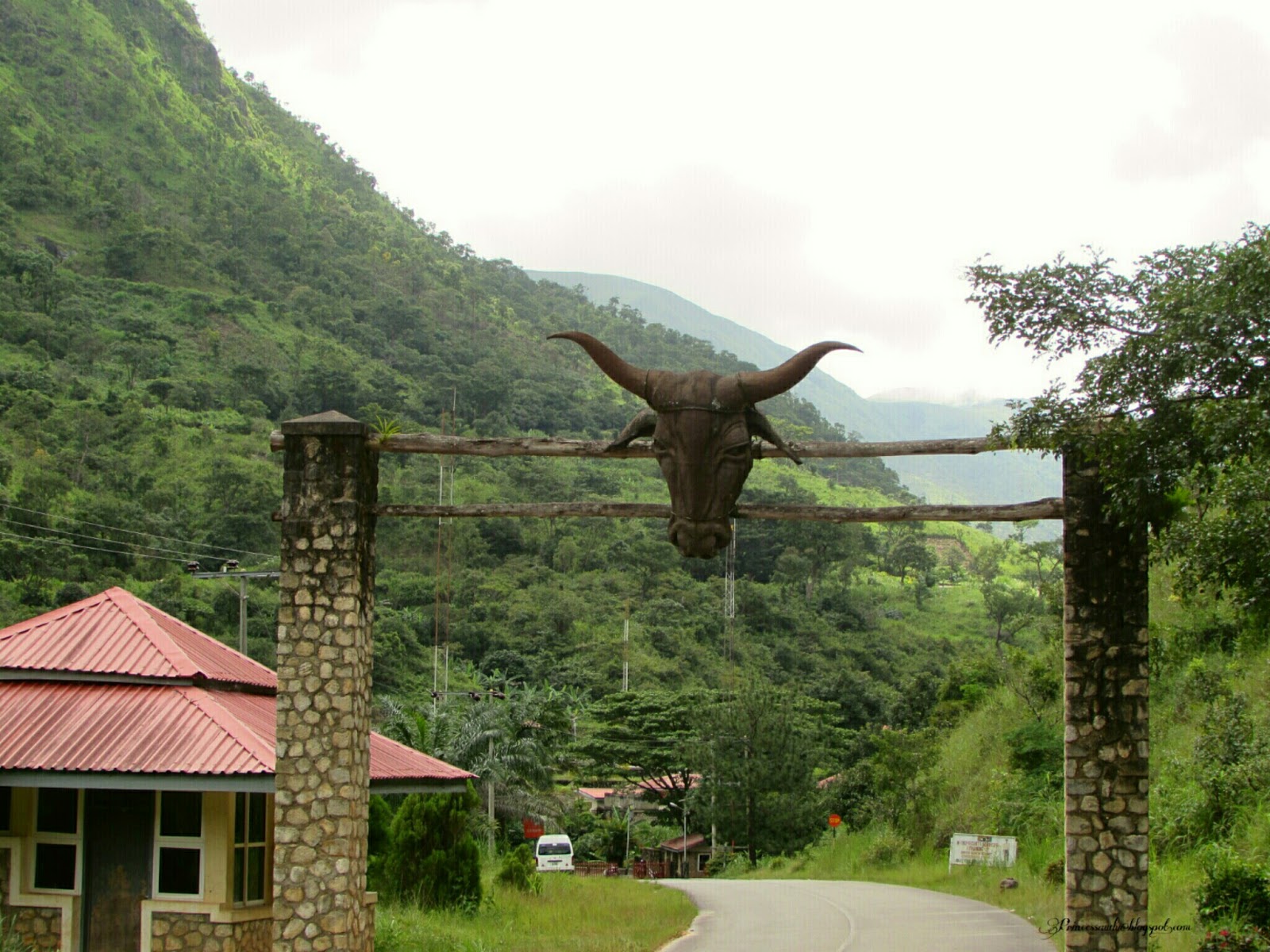
Obudu Cattle Ranch
Obudu Cattle Ranch
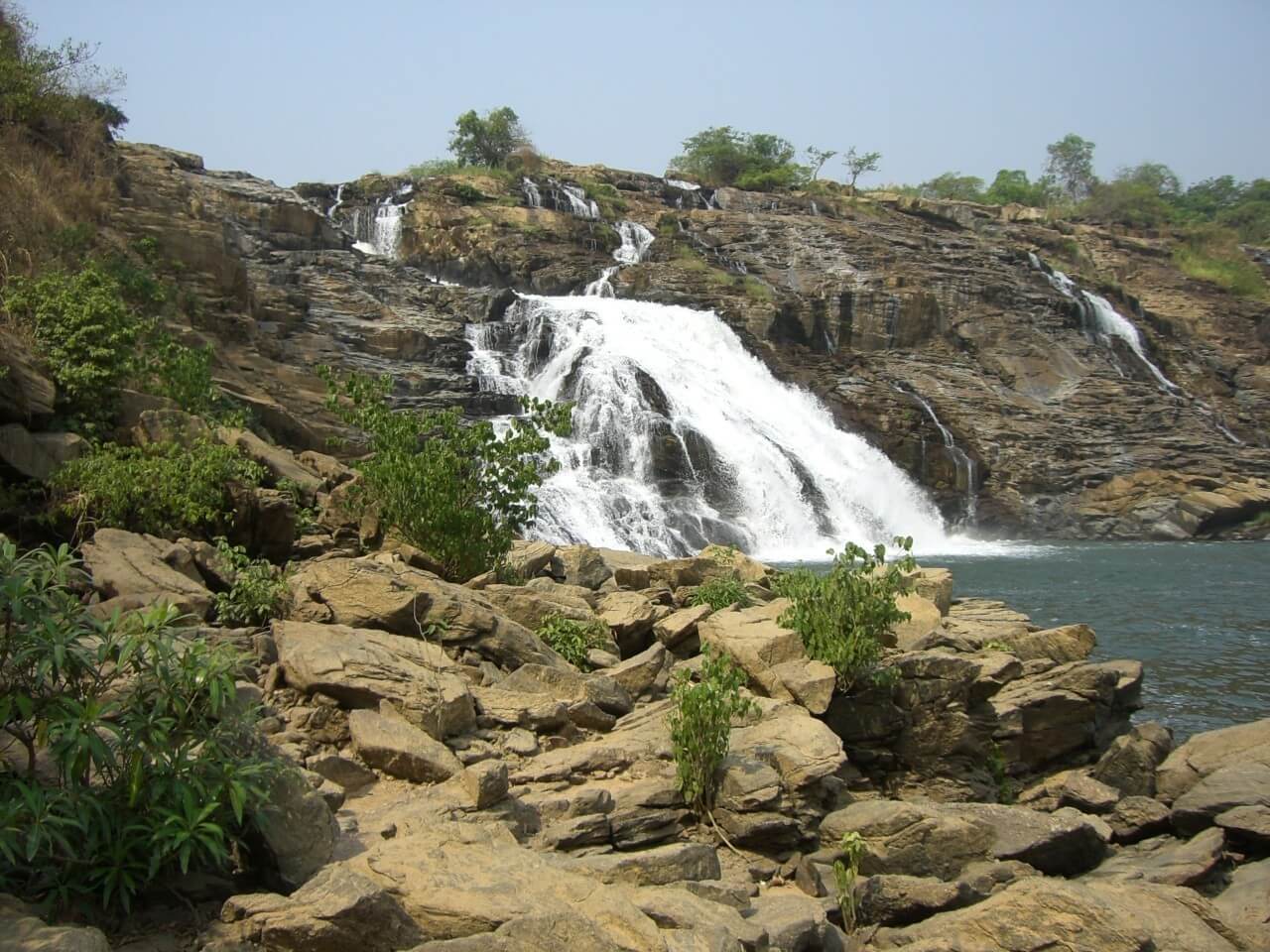
Oguta Lake
Oguta Lake
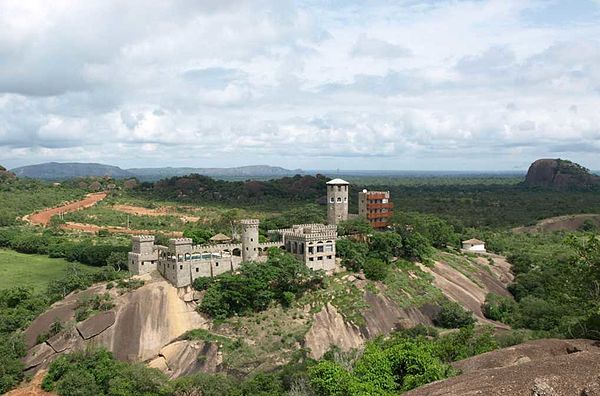
Kajuru Castle
Kajuru Castle
Tourism News

Be Part of history, Get involved!
Register to attend DNGTC2025 and secure your spot for an engaging experience! Join us for insightful discussions, networking opportunities, and valuable insights from industry leaders.
DNGTC © 2025 All rights reserved.
Developed By: MaxiDev
